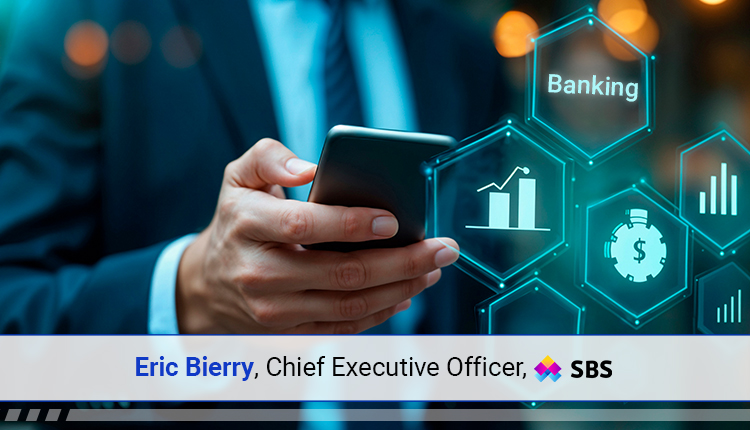By: Eric Bierry, CEO at SBS
Three quarters of banks are looking to modernize their technology infrastructure this year. But how can they ensure these investments actually deliver a return and strengthen the customer experience?
It’s a question we often hear–across the industry–as IT leaders at banks face mounting pressure from senior executives and stakeholders to ensure that every dollar of their budget drives value for their business.
The good news is that banks don’t have to go it alone. There’s a modernization roadmap that they can follow that prioritizes customers as banks upgrade their back office systems.
Here are three essential steps banks should take to ensure their technology investments are effectively allocated:
Let customers’ needs guide technology decisions.
Technology teams aren’t traditionally customer– facing, so they can easily default into building off of assumptions rather than real-time customer feedback. Because they’re not regularly interacting with customers, it’s easy to lose sight of what they actually need. When it comes to large scale digital transformation projects, customers should be at the center of every decision. Banks simply can’t afford to do it any other way.
For example, while most consumers want convenient, hyper-personalized advice from banks to help them manage their finances, nearly half (40%) say they haven’t received it. With this insight, banks should modernize their technology to make consumer data more accessible and actionable, so they can offer personalized insight that consumers want.
Consumers are also increasingly expecting access to instant payments to receive and send their money faster. This is a rising trend as consumers move away from the status quo of waiting 3-5 days for a transaction to settle.
And these are only two of many examples. By speaking directly with their customers–and integrating their feedback directly into their technology– banks can innovate to provide a better experience and drive increased customer satisfaction through their offerings. This will ultimately lead to heightened customer retention and overall business growth.
Shift from an all-in-one, monolithic core system to a more flexible, modular one.
At the heart of every bank’s technology infrastructure is their core system, or the central platform that the bank uses to store and process data. It ensures, for example, that when someone walks into their bank’s branch and deposits $50, that their transaction is immediately recorded and reflected across each of the bank’s channels—so it’s easily accessible when the customer then walks into a different branch or calls customer support an hour later.
Many banks have historically used a monolithic core system where all banking functions–such as deposits, loans, payments and customer management–were all intertwined in a large database. Because everything is in this one system, each function is dependent on the next. So, if a bank wants to make upgrades to its payments, for instance, the team would need to likely reconfigure the entire system. It’s why many banks are hesitant to upgrade their technology–it’s a time-intensive and resource-heavy commitment.
But, there is another way: a modular core system. With this flexible, piecemeal system, every component, while working together, operates independently. This means that banks can upgrade or replace one part–like adding instant payments or replacing loan technology–without overhauling their entire system. As new technology emerges and customer needs change over the years, banks can move faster and innovate more frequently to add new features and services in real-time.
Making the switch from a traditional, all-in-one core system to modular one doesn’t happen overnight–but it doesn’t have to. Banks can start to build a new, more flexible core piece-by-piece until they have a complete system that allows them to be more competitive, better meet customer demands and enhance the entire customer experience.
Read More: How the GCC Region Transformed its Payments Sector
Outpace customer expectations through continued innovation.
With a modular system in place, banks can launch new products and update features quickly and consistently. This allows them to not only address the current demands of their customers, but outpace them, to deliver new services and features before customers even ask for them. Once they prioritize the services that customers want now, they can turn their innovation to services that continue to deepen their existing customer relationships and build new ones, as well as open new revenue streams.
Take instant payments: as more customers expect instant payments, banks can integrate an instant payments module to launch that capability–and continue to iterate on it. These individual parts of the bigger systems make it easy for banks to test, launch and expand new banking capabilities, without any disruption to the larger system.
There’s no one-size-fits-all path for banks when it comes to this innovation. It should be fueled and inspired by customer feedback. The more banks listen to their customers’ needs–the more they can grow to understand what they want, and what they will eventually want.
By placing customers at the center of every modernization initiative and adopting a modular core, banks can deliver offerings that align with their customers and ensure their technology investments drive lasting business value.
Read More: Global Fintech Interview with Radha Suvarna, Chief Product Officer of Payments at Finastra
[To share your insights with us, please write to psen@itechseries.com ]
